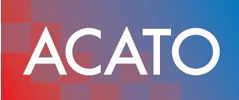ISO 27001 Certification
For companies, ISO 27001 certification is influenced by the complexity of the business model and the expected risk profile. Typically, an organization’s IT infrastructure will reflect its business model and corporate philosophy. The more complex the constellation of software, hardware and business processes, the more complex an ISO27001 audit will be.
How does a company obtain ISO certification?
In order to receive ISO certification as a company, you must submit standard-compliant documentation about the management system used in your company to the certification body. You can submit your own documentation for each standard or cover several ISO standards with an integrated management system (e.g. Integrated Management System ISO 27001 + EU GDPR). We will discuss the advantages and disadvantages of an integrated management system in our separate article.
How is the ISO 27001 Level I certification audit carried out?
In stage 1, the certification capability of your ISMS is checked. Location-specific framework conditions are also compared with the expected documentation. The necessary information on the scope is also determined.
The following will be examined in audit stage 1:
- Is there conformity and completeness of the documents submitted with regard to the ISO 27001 standard?
- Is the implementation of the management system actually present in the company?
- Can the level of implementation of the management system be determined?
- Are relevant documents missing from the ISMS presented?
Based on the findings from audit level 1, the auditors can create an audit plan. This requires appropriate knowledge of the organization and the management system.
How is ISO 27001 Level II certification audit done?
The purpose of audit stage 2 is to examine the effectiveness of the management systemintroduced. Auditors take targeted samples along the process chains. The random samples help to clarify whether the requirements of the standard are being met. Audit planning provides the roadmap for the lead auditor and his co-auditors. The auditors also check organization-specific documentsfor compliance with general and industry-specific principles(laws, industry-specific, required standards, etc.).
As part of the final audit meeting, the auditors explain any deficiencies or deviationsthat may have been identified in the audited company. They show how these items affect the audit result. In the event of non-conformities, the company’s top management undertakes to initiate the necessary corrective actions. Root cause analysis can help better understand what needs to be done. If necessary, the audit team later checks whether the proven measure made the expected correction possible.

Who needs ISO 27001 certification?
Both B2B and B2C companies need one or more certifications according to certain ISO standards. Where there are high risks for employees or customers, companies are often forced to acquire at least an ISO 27001 certificate. However, there is no legal obligation that forces companies to carry out ISO certification. Insurers, banks and major customers in particular indirectly force companies to introduce a certified management system.
The following risks force companies to introduce:
- Occupational safety risks (e.g. risk of accidents at workbenches)
- Product safety hazards (e.g. danger to children due to defective toys)
- Cyber risks (e.g. data breaches, theft of customer lists, industrial espionage)
- Environmental risks (e.g. transport accidents, toxic discharges, seeping machine oil)
What ISO certifications are there?
There are the following ISO standards that can be most important for many companies
- ISO 9001: Quality management
- ISO 14001: Environmental management
- ISO 27001: Information security
- ISO 30001: Risk management
- ISO 42001: Artificial Intellignce Management
- ISO 45001: Occupational health and safety management
- ISO 50001: Energy management

What advantages do ISO certifications offer?
The organizational processes are not left to chance, but are specifically documented and improved. This reduces operating costs, claims, insurance costs and risks. The value added returns, margins, sales figures and company valuations increase.
The main external impact of an ISO certificate is the quality signal to the marketin which suppliers and customers can be found. The company stands out from the rest of its competitors. Customers see certified companies as established and professional companies. This creates an appreciation in the buyers’ minds: the supplier appears reliable, sustainable, high-qualityand efficient enough to guarantee long-term cooperation.
Startups benefit substancially against mid sized competitors who often lack ISO 27001 certification due to a level of outdated management principles. This is where startups can increase their deal closing rates by displaying their accredited ISO certifictes on their websites.
FAQ related to ISO 27001 Certification
Maintaining ISO 27001 compliance involves regularly reviewing and updating the information security management system to ensure it aligns with the standard requirements and effectively addresses risks to the organization's information assets. Organizations also need to conduct internal audits, implement corrective actions, and continuously improve their processes to remain compliant with ISO 27001.
A complex combination of software, hardware, and business processes triggers an ISO 27001 audit. The audit is necessary to ensure compliance with information security standards and assess the organization's management system.
ISO 27001 audits are typically conducted annually to review the organization's information security management system compliance.
ISO 27001 certification offers benefits such as improved information security management, reduced cybersecurity risks, and increased trust from customers and business partners. Additionally, it helps in demonstrating compliance with legal and regulatory requirements related to data protection and security.
Documenting ISO 27001 processes involves creating standard-compliant documentation for the management system used in operations. This documentation must be submitted to the certification body for review during the audit process to ensure adherence to the requirements of the norm.
ISO 27001 risk assessment involves evaluating potential risks to information security within an organization, identifying vulnerabilities, and implementing controls to mitigate or manage these risks effectively. It is a critical component of the ISO 27001 certification process, ensuring that information assets are adequately protected against various threats and vulnerabilities.
To begin ISO 27001 implementation, start by conducting a gap analysis to identify current practices against standard requirements. Then, develop and implement necessary policies, procedures, and controls to meet ISO 27001 standards.
An ISO 27001 audit involves submitting standard-compliant documentation of the management system in use, with auditors verifying adherence to the norm's requirements. The process includes examining organization-specific documents for compliance with general and industry-specific guidelines and assessing the impact on the audit result.
To ensure the effectiveness of ISO 27001, companies must carefully document and improve their organizational processes to reduce costs, incidents, insurance premiums, and risks while increasing returns, margins, sales, and company valuations. This signals quality to the market, establishing reliability, sustainability, and capability for long-term partnerships with suppliers and customers.
ISO 27001 control objectives outline the measures to be implemented to manage information security risks effectively within an organization. They provide a framework for establishing, implementing, maintaining, and continually improving an information security management system.
To prepare for ISO 27001 certification, focus on understanding the standard requirements, documenting your information security management system, conducting internal audits, and addressing any non-conformities found. It is also crucial to engage employees at all levels and continuously improve your ISMS to meet the certification criteria effectively.
ISO 27001 assessment involves submitting standard-compliant documentation to a certification body, undergoing audits to verify compliance with the norm's requirements, and addressing any identified non-conformities for information security management systems.
Conducting an ISO 27001 self-assessment involves evaluating your organization’s information security management system against the requirements of the standard to identify strengths and weaknesses. It is essential to examine documentation, processes, controls, and overall compliance to determine areas for improvement and ensure ongoing information security effectiveness.
ISO 27001 certification is preceded by the submission of standard-compliant documentation regarding the management system in use, followed by the audit process to ensure compliance with the required norms and regulations.
Managing ISO 27001 records involves maintaining standard-compliant documentation of the management system used in operations and submitting it to the certification body for review. Regular audits are conducted to ensure requirements are met and address any non-conformities to improve overall information security management.
ISO 27001 certification is valuable for organizations with complex software, hardware, and business processes, as it ensures information security management systems are in place and adhered to. Companies with high risks for employees or customers, such as those in the financial or insurance sectors, may find it necessary to obtain ISO 27001 certification to mitigate cyber risks and demonstrate commitment to data protection.
ISO 27001 improves security by establishing an information security management system that helps identify risks, implement controls, and continuously improve security measures within an organization. This systematic approach enhances overall security posture and reduces the likelihood of security incidents.
The ISO 27001 certification process involves submitting standard-compliant documentation of the management system, undergoing audits to ensure norm requirements are met, addressing any non-conformities, and obtaining certification from accredited bodies for information security management.
The ISO 27001 certification should be renewed within the validity period specified on the certificate to ensure continuous compliance with information security standards and practices. Organizations can begin the renewal process well in advance of the expiry date to avoid any disruptions in their certification status.
Meeting ISO 27001 requirements involves submitting standard-compliant documentation to the certification body, undergoing audits to ensure conformity, and addressing any non-compliance through corrective measures. ISO 27001 certification demonstrates a commitment to information security management and can enhance trust with stakeholders.
Expect a thorough audit of your software, hardware, and business processes to ensure compliance with ISO 27001 standards. The certification process involves submitting documentation, undergoing sample checks, and addressing any identified non-conformities to demonstrate adherence to the requirements.
ISO 27001 certification is crucial for ensuring information security within an organization, providing a framework to protect against cyber risks and data breaches. It also demonstrates a commitment to safeguarding sensitive information, enhancing trust with stakeholders and clients.
ISO 27001 controls should be reviewed regularly to ensure ongoing effectiveness and compliance with requirements. The frequency of these reviews can be determined based on the organization's risk assessment, changes in the internal or external environment, and any new or emerging threats to information security.
The ISO 27001 certification cycle involves submitting documentation to the certification body, undergoing audits to verify compliance with the standard's requirements, and implementing corrective measures if needed. Organizations may choose to pursue ISO 27001 certification to demonstrate their commitment to information security management.
Preparing for ISO 27001 certification involves documenting and improving organizational processes, ensuring compliance with information security requirements, and undergoing audits to assess adherence to the standard. Organizations may need to address cyber risks, data security, and information protection to meet certification criteria.
ISO 27001 certification involves submitting standard-compliant documentation on the management system in use at the organization for review by certification bodies. The audit assesses compliance with normative requirements, including laws and industry-specific regulations, to demonstrate a commitment to information security.
Aligning ISO 27001 with business strategy involves integrating information security considerations into the overall strategic objectives and decision-making processes of the organization. This ensures that security measures are aligned with business goals and priorities for a comprehensive and effective approach.
ISO 27001 certification audits are conducted by accredited certification bodies or auditors who are trained and qualified to assess an organization's information security management system against the requirements of the ISO 27001 standard.
Common pitfalls in ISO 27001 implementation include inadequate risk assessment, lack of senior management commitment, poor documentation, and insufficient training and awareness. Lack of regular monitoring and continual improvement can also lead to challenges in maintaining compliance with the standard.
Reporting ISO 27001 compliance involves submitting standard-compliant documentation of the management system used in operations to the certification body. The auditors conduct samples to verify adherence to the norm's requirements, examining organization-specific documents for compliance with general and industry-specific regulations.
